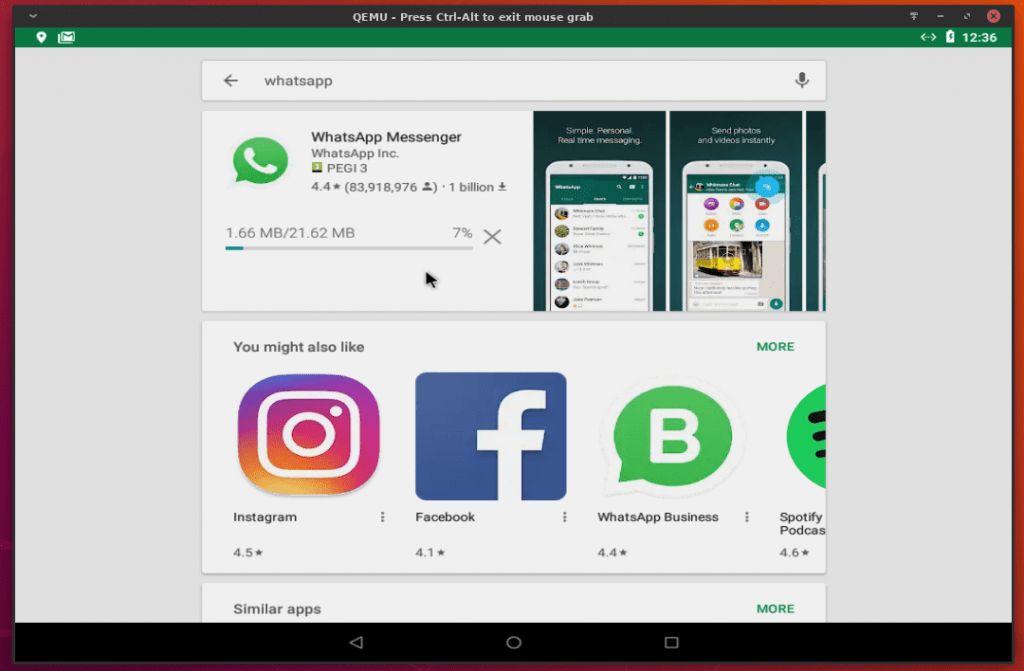This Coronavirus (Covid-19) has been spreading all over the world and forcing people to remain in their homes in fear of reaching them. At the first few days, one will be happy to stay in home after long continuous months of work, but you’ll probably get bored after the first week.
Luckily, there are many activities and things to do with Linux and the open source world if you are bored. The most entertaining one could be trying “special” Linux distributions in the wild in order to see what they offer.
To help you spend your time during the quarantine, we’ve prepared a list of 7 unusual Linux distributions that you can have fun with. We’e also added URLs to online in-browser testing pages so that you can try them before you actually download them to your PC. Enjoy!
Table of Contents:
Sabayon Linux
A famous meme exists that Arch users are Arch users because they couldn’t set up Gentoo. If you were one of those people, then you would love to hear about Sabayon; Which is a Gentoo-based Linux distribution made for beginners and new users.
Unlike its parent distro, it comes with a graphical desktop environment and an installer, and tries its best to be ready out-of-the-box for the activities of most users, such as gaming or multimedia. Sabayon also follows a rolling-release model, and provides server and cloud images, if you need them.
You can try Sabayon online, or download it from its official website.
SliTaz
SliTaz is a minimal Linux distribution that comes in a size of 40MB. It can be used either as a graphical desktop or a command line server distribution. Thanks to its package manager, Tazpkg, it can be customized and extended easily in order to make it contain more software and redistributed again later. It is an independent Linux distribution.
It provides you with a “persistent mode” that will keep your changes on your USB stick even if you reboot your system later or plug the USB to another machine.
Try SliTaz online now, or download it from its website.
Android x86
Did you know that you can use the android system on your desktop/laptop PCs too? That’s right, thanks to the android x86 project, you can use the ISO images they provide to boot and install android on your machine. They port each new android version to the x86 architecture (desktop/laptop arch) as soon as possible, and have been doing that for many years now.
There can be many reasons on why you would want to have android on your PC. Such as using some android applications that you may need in your work or any other reason. You can install it inside a virtual machine too and launch it whenever you need it.
Try android x86 online now, or learn more about it from its official website. Additionally, here are some resources about the project from our side:
Install Android 8.1 Oreo on Linux To Run Apps & Games
Overview on Android x86 Project & Call to Help
KaOS
An independent Linux distribution that uses the KDE desktop. KaOS follows the rolling-release model in providing all the latest KDE Plasma desktop packages to its users. And as its developers say, they do not intended to have a large user base or support other desktops. Instead, they want to focus on the KDE desktop and its quality instead of quantity.
That’s why – although they have some fairly large package repositories – are still limited comparing to other Linux distributions’ repositories in what they provide. They also support the pacman package manager, so you can get some packages from Arch if you shall ever need.
Try it online now, or learn more about KaOS from its website.
Tiny Core
One of the smallest Linux distributions ever; As it only ships with a Linux kernel, small utilities and booting scripts and a minimalist graphical desktop, which is why it is only 12MB in terms of size.
Tiny Core is a modular distribution for advanced users, it can be extended after installation with many additional modules and rebuilt again to be used with the new set of modules whenever needed. The basic version doesn’t come with WiFi drivers or a web browser, but you can use the “CorePlus” version of it, which does come with WiFI drivers (no browser, though, but you can install it later).
Try Tiny Core or head to downloading it.
NixOS
NixOS is one of the most special Linux distributions you may hear about it. It comes with its own package manager “Nix” which is an extremely powerful package manager that allows you to have many advanced features; Such as installing multiple versions of the same package side by side, rolling back the upgrades you did, atomic upgrades, multi-users support (Each user having their own profile of packages) and much much more. It comes with its own filesystem hierarchy (E.g no /usr or /bin) in order to provide you with the features above.
NixOS is an independent Linux distribution, and comes with the KDE desktop by default. You can install its package manager “Nix” individually on your own Linux distribution if you want.
Try NixOS online now, or read more about it.
Qubes OS
The latest unique distribution in our list is Qubes OS, which uses a unique system design architecture that tries to isolate all applications from each other as much as possible in order to maximize security and minimize the data being shared between them. Qubes OS simply creates a virtual machine inside your OS for each application or set of applications of the same type in order to guarantee that they are isolated from each other. To do that, it utilizes Xen virtualization technology.
Based on Fedora and recommeded by Edward Snowden and many other famous computer science figures, Qubes OS is considered to be one of the most secure operating systems in the world.
Try Qubes OS online now, or read more about it from its official website.
So you’ve reached the end of our list, but the fun doesn’t end here! There are many other distributions that you can try if you want on DistroTest.net, and you can learn more about these distributions from DistroWatch.com.
If you have any other recommendations or ways to spend to quarantine with the Linux world while setting in your home, we would love to hear them in the comments below.
FOSS Post is a high-quality online magazine about Linux and open source software. With a team of professional writers from all over the world, we bring you the latest articles, analysis and reviews related to open source.
Articles published with this account are written as a collaborative effort between writers. You can email us at contact@fosspost.org














